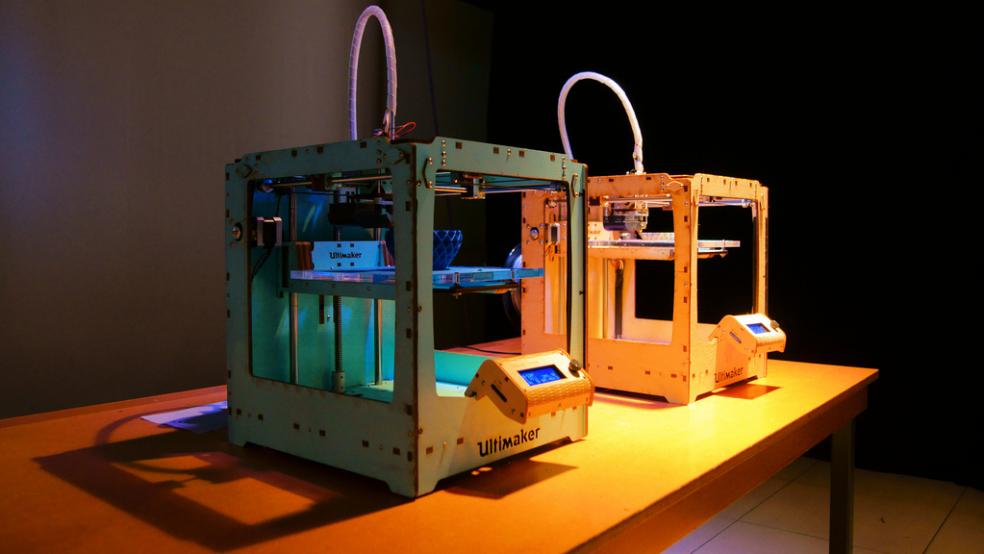Imagine a squad of Army Rangers prepping to capture a high-value subject barricaded inside a three-story building. The Rangers decide send in a small camera drone to check for IEDs — but there’s a problem: the enemy has begun putting its booby-traps on the ceiling, where the downward-facing drones can’t see them. If only those little gizmos had cameras on the top…?
A new project by the U.S. Army Research Laboratory and Georgia Technical Institute just might help. It aims to give soldiers the ability to 3D-print swarms of mini-drones to specific specifications within 24 hours. Its creators call this approach “aggregate derivative approach to product design,” or ADAPT.
Related: Exploding Drones: ISIS Is Arming UAVs You Can Buy on Amazon
“A soldier with a mission need uses a computer terminal to rapidly design a suitable [drone],” says a poster by project chief engineer Zacarhy Fisher. “That design is then manufactured using automated processes such as laser cutting and 3D printing. The solution is sent back to the soldier and is deployed.”
Fisher says the drone itself could be fabricated in less than a day, with total turnaround time of less than three days.
In their research paper on the design approach, they lay out a four-step process: requirements analysis, which is figuring out what type of drone you need for the mission; architecture selection, selecting among a variety of standard and custom parts to build it; interface design, making sure it all fits together; and concept refinement.
The trick is to limit the number of potential build options around one of the four different tasks a soldier might need a small drone for. Previous research from Georgia Tech has identified those as perimeter surveillance and defense, reconnaissance for inside buildings, reconnaissance for inside caves, and jungle reconnaissance. Depending on the mission type, you know if you need a video camera, target designator, light detection and ranging and other pieces.
Related: The Pentagon Is Developing Disappearing Drones
The authors describe the basic approach as inspired by Lego.
“The on-demand approach is succinctly explained via an analogy to Lego®,” they write. “Lego® bricks contain a number of modular parts that can be constructed into different models depending on what outcome is desired. Instructions are provided to help the user build different systems out of the same set of components.” At the beginning of December, the researchers performed a demonstration on several of the drones at Aberdeen Proving Grounds in Maryland.
Future capabilities could include combining 3D printing, drones, and artificial intelligence, an of research being led by Kyrre Glette at the University of Oslo, who in 2014 demonstrated the first steps in program to allow robots to 3D-print themselves.
This article originally appeared on Defense One. Read more from Defense One:
Here’s Why Trump’s Intel Bashing Matters
The Pentagon Needs Its Own Google For All Its Data, Says Eric Schmidt
Trump Will Inherit the Biggest NATO Buildup in Europe Since the Cold War

